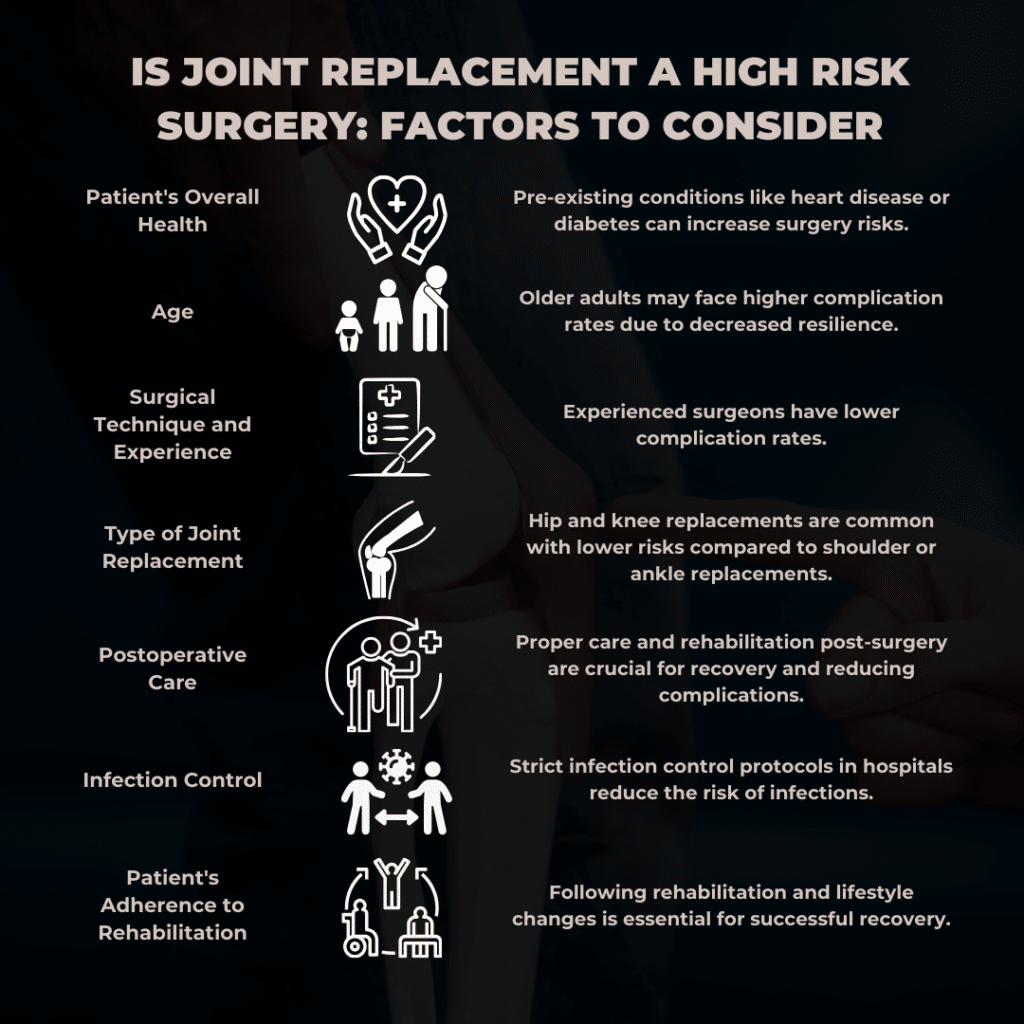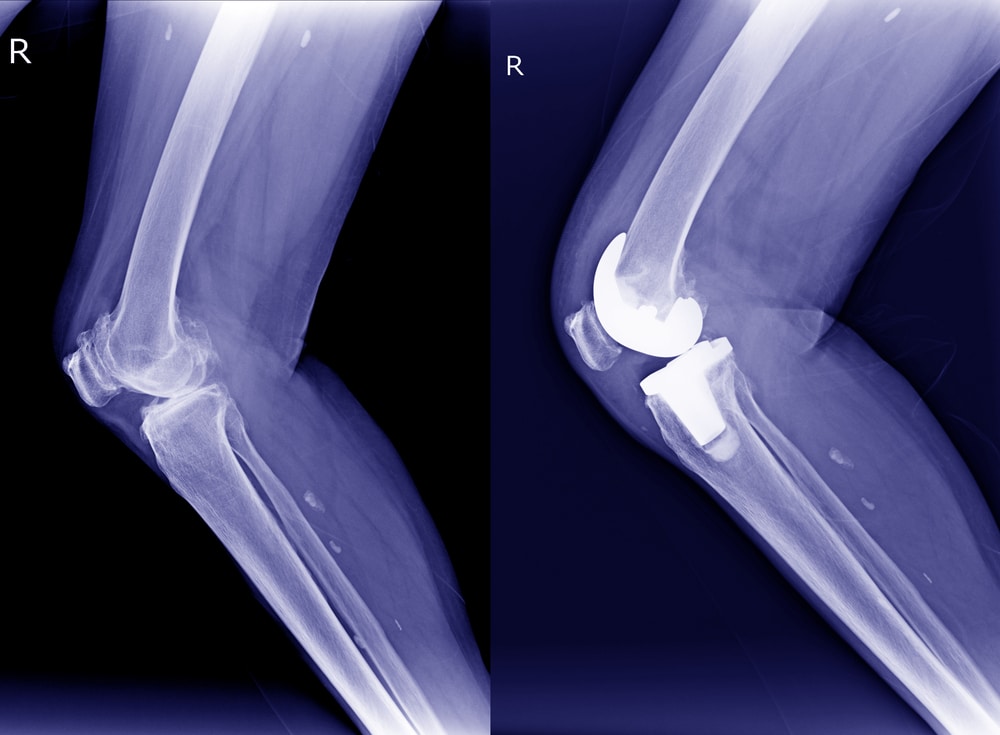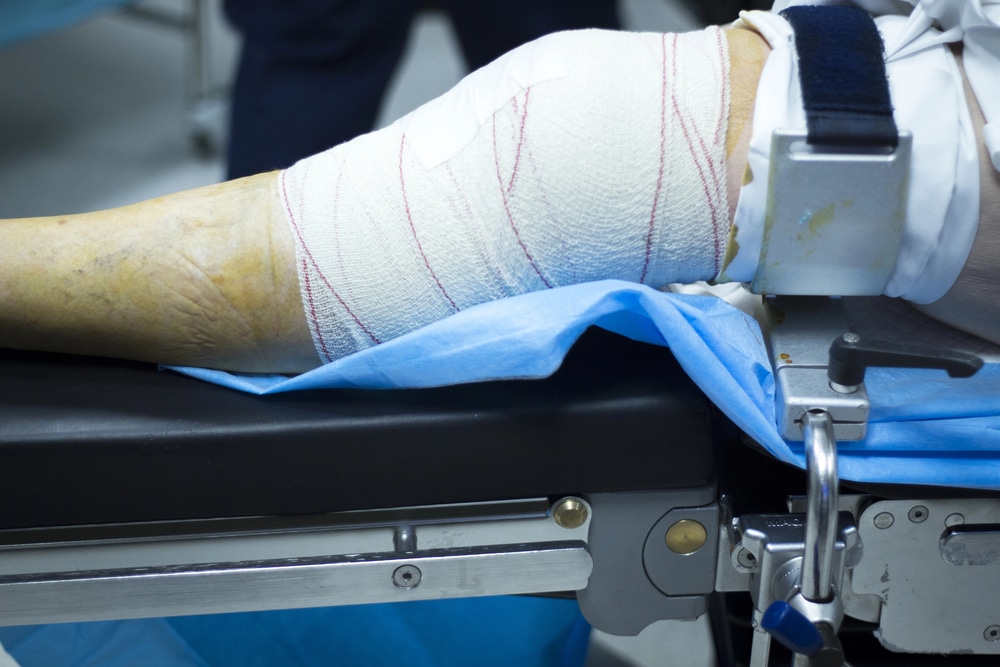
Joint replacement surgery can be intimidating, especially with concerns about the risks involved. Many people ask, "Is joint replacement a high risk surgery?" This is a crucial question for those dealing with severe joint pain and mobility issues that impact their daily lives. While any surgery has risks, knowing what these risks are and how they can be managed is essential for making informed decisions.
In this blog post, we'll discuss the factors influencing the risk levels of joint replacement surgery. Understanding these aspects will help you have a clearer picture of what to expect, easing any worries and preparing for a successful procedure.
To understand the risks of joint replacement surgery, consider these seven essential factors:
Patient's Overall Health
Your general health is a big factor in determining if joint replacement is a high risk surgery. Conditions diabetes, heart disease, or obesity can increase the risk of complications. For example, someone with uncontrolled diabetes might face higher risks of infection and slower healing. Prior to surgery, your doctor will assess your health and suggest steps to improve your condition, like losing weight or managing diabetes, to reduce risks.
Age
Age can affect how well you recover from surgery. Older adults might have a higher chance of complications due to decreased resilience. However, many older patients successfully undergo joint replacement thanks to advances in medical technology. Older adults need a thorough pre-surgery evaluation to ensure they are fit for the procedure.

Surgical Technique and Experience
The skill and experience of your surgeon are crucial. Surgeons with a lot of experience in joint replacements tend to have fewer complications. Choosing a well-regarded surgeon can significantly improve the surgery's success. Researching your surgeon's background, asking for referrals, and checking reviews can help you decide whether joint replacement is a high risk surgery for you.
Type of Joint Replacement
The type of joint being replaced also matters. Hip and knee replacements are common and have well-established procedures. On the other hand, shoulder or ankle replacements might have higher risks because they are less common and more complex. Each type of joint replacement comes with its own set of challenges and potential complications.
Postoperative Care
Good care after surgery is vital for a smooth recovery. This includes physical therapy, wound care, and regular check-ups. Proper rehabilitation helps you regain strength and mobility, reducing the chances of complications. It's important to follow your doctor's and physical therapist's instructions closely during recovery.
Infection Control
Infection is a serious risk with any surgery. Hospitals and surgical centers that follow strict infection control protocols, like maintaining sterile environments and monitoring patients properly, greatly reduce this risk. Patients must keep their surgical site clean and following care instructions to prevent infection.
Patient's Adherence to Rehabilitation
Your commitment to following rehabilitation and making lifestyle changes is essential. Sticking to physical therapy and adjusting your daily activities can significantly influence the success of the surgery. Patients who are proactive in their recovery tend to have better outcomes and quicker returns to normal activities.
These factors help answer the question, "is joint replacement a high risk surgery?" By considering each element, you can better prepare and make informed decisions about your health.
Pain is a common concern for anyone considering total knee replacement surgery. Understanding what to expect can help you handle it better. So, how painful is a total knee replacement? Let's break it down.
The pain you experience can depend on how severe your knee problems were before surgery. Those with significant pain and limited mobility may feel greater relief post-surgery, but the initial recovery period can still be challenging.

The method your surgeon uses can influence pain levels. Minimally invasive techniques may result in lesser pain and quicker recovery than traditional methods. Discussing different surgical options with your surgeon can help you understand what to expect.
Effective pain management is crucial. Surgeons often use a combination of medications to control pain. These may include local anesthetics, oral painkillers, and sometimes nerve blocks to numb the area. Post-surgery, you will receive a pain management plan tailored to your needs.
Physical therapy is essential for recovery. It helps regain strength and mobility, but the exercises can be painful initially. Following your therapist's instructions can help manage this pain effectively. The more committed you are to your rehabilitation, the better your recovery will be.
Everyone's pain tolerance is different. What might be very painful for one person could be more manageable for another. Communicate with your medical team about your pain levels so they can adjust your treatment accordingly. It's important to stay ahead of the pain rather than letting it become severe.
Swelling is a typical part of recovery and can contribute to discomfort. Ice packs, elevation, and prescribed medications can help reduce swelling and pain. Keeping the swelling under control is key to a more comfortable recovery.
Although rare, complications like infections or blood clots can cause additional pain. Following your doctor's post-surgery care instructions can minimize these risks. Awareness of the signs of complications and addressing them early can make a big difference in your recovery.
In summary, while a total knee replacement can be painful, effective pain management strategies and proper postoperative care can help manage and reduce this pain. Understanding these aspects will help you prepare better for the recovery journey and address concerns about "is joint replacement a high risk surgery."
Is total knee replacement a high risk surgery? Generally, the risks are similar to those of other joint replacements, but specific factors can make a difference.
Both joint replacement and total knee replacement surgeries share common risks such as infection, blood clots, and complications from anesthesia. However, knee replacements are often more straightforward due to their prevalence and the extensive experience surgeons have with these procedures.
Therefore, while both surgeries carry risks, knee replacements' specific nature and commonality often result in slightly lower risk levels. For many, the question "is joint replacement a high risk surgery" may have a slightly different answer when considering knee replacements.
Recovery after knee replacement surgery involves several stages. Here's what you can generally expect:
Most patients stay confined in the hospital for 2-3 days. You'll start with gentle movements and physical therapy exercises during this time. The medical team will monitor your progress and recovery and manage your pain, which is a crucial part of addressing "is joint replacement a high risk surgery."

Pain will be managed with medications. It's crucial to follow your doctor's instructions to stay ahead of the pain. Effective pain management helps you start moving and participating in therapy sooner.
You'll likely begin walking with a walker or crutches within a day after surgery, preventing blood clots and improving circulation. Early movement is important for a successful recovery.
Continue physical therapy to regain strength and mobility. Exercises will gradually become more intensive. Your therapist will guide you through a personalized plan to ensure steady progress.
Keep the surgical site clean and dry. Follow your doctor's instructions for wound care to prevent infection. Proper wound care is paramount for healing and preventing complications.
You'll be encouraged to move around and perform light activities to aid recovery. Avoid strenuous activities until your doctor says so. Gradually increasing your activity level helps build strength and flexibility.
Full recovery can take several months. Consistent physical therapy is vital for regaining full function. Staying committed to your rehabilitation plan is key to achieving the best outcome.
To support your new joint, incorporate exercises that strengthen your knee and maintain a healthy weight. Long-term success hinges on making healthy lifestyle choices and staying physically active.

Regular check-ups with your surgeon make sure your knee is healing properly and allows for adjustments in your recovery plan. Keeping up with follow-up visits is important for monitoring your progress and addressing any issues.
Understanding these stages will help you set realistic expectations and prepare for the journey ahead.This comprehensive approach addresses the question, "is joint replacement a high risk surgery," by outlining the steps to a successful recovery.
Joint replacement surgery, while not without risks, offers significant benefits for those suffering from severe joint pain and mobility issues. Patients can confidently navigate this process by understanding the key factors and preparing adequately.
If you're considering this procedure, discussing your concerns with a medical professional is paramount so you make the best health decision. Sunnyvale Sports Medicine and Orthopedic Center can provide expert advice and care throughout your joint replacement journey.